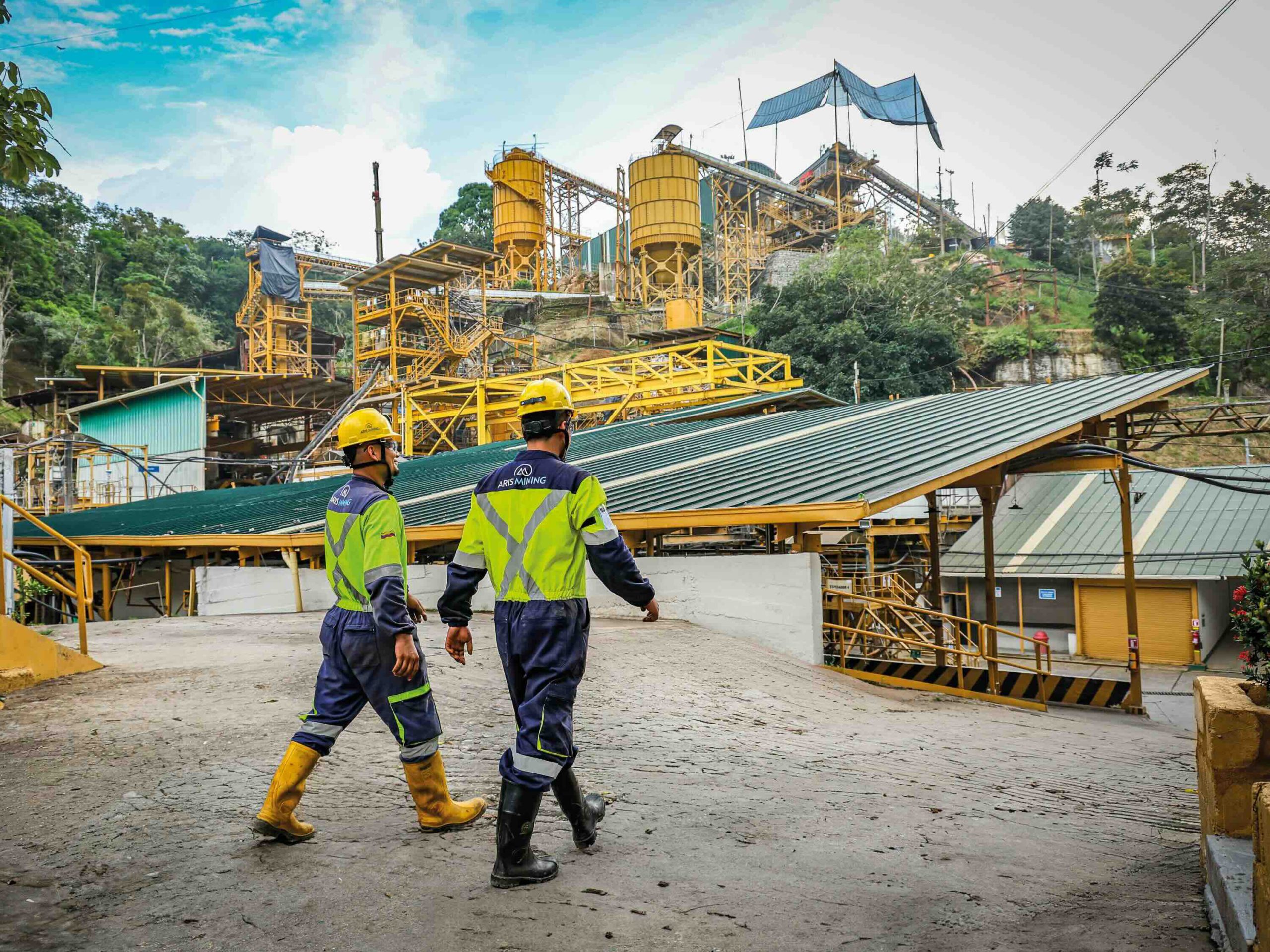Victoria Gold continues to advance at Dublin Gulch
It’s hard for me to believe that it’s been almost six years since I toured Victoria Gold’s Eagle Gold Project, located on the company’s Dublin Gulch property, 375 km north of Whitehorse, Yukon.
Back then, the project was little more than a camp and a few scratchings on a neighbouring mountain. It was like many other sites I visited in 2010; it was full of potential, full of hope, but also full of mountain-sized challenges to overcome.

The Eagle gold property 375 km north of Whitehorse.
Eagle Gold was, however, a ‘different’ site in that it featured what many predicted had the greatest potential to become Yukon’s next mine; namely, lots of gold and year-round road access to get at it.
And, today, those predictions are becoming a reality because Eagle Gold is about to take off.

Clockwise from left: In-valley heap leach; Waste rock storage, Waste rock storage; Open pit; Camp; and Gold recovery plant.
In fact, thanks to perseverance by its owners, and an undying support from investors, many of those earlier challenges have been met and overcome; the most notable being that the Eagle Gold Project is now fully permitted and, as just mentioned, is on the verge of becoming the Territory’s next mine.
With permits and people in hand, Victoria Gold is almost ready to go, and it’s mainly because of the latter (people) that President and CEO John McConnell credits much of the success of the project so far.
As every miner knows, people can make or break a project. McConnell says that he’s found the key to keeping people happy is by making sure they have incentive, that they’re well paid, and perhaps, most of all, that they’re well rested and well fed.
And, he says, it’s for those reasons that Victoria Gold made it a priority to build a first-class living facility, with private rooms, fully equipped kitchen and internet access, that rivalled anything the crews would find almost anywhere else in the Territory.
This year, thanks to a strong balance sheet and treasury, Victoria Gold was able to take advantage of an exceptional opportunity for the expansion of the facility rooms, industrial kitchen, and recreational areas.
The newly acquired camp, located a stone’s throw from the Eagle Gold Project site, will allow Victoria to immediately mobilize more than 200 construction personnel directly to the site when construction of the mine begins, not to mention the nearly $6 million in upfront capital camp savings for the Feasibility Study Update that is currently underway.
The proposed mine (shown on the previous pages), is a fully permitted, low cost, conventional open-pit, three-stage crush, in-valley heap leach operation with a gold recovery plant that will produce approximately 200,000 ounces of gold per year.
With the Eagle Gold Project hosting a National Instrument 43-101 compliant Reserve of 2.3 million ounces of gold (92 million tonnes averaging 0.78 grams per tonne) it’s no wonder McConnell and his team are the talk of Yukon and international mining circles.
So much so, in fact, that Victoria’s shareholders are well positioned to participate in the success of the Eagle Gold Project as it advances to becoming Yukon’s next operating gold mine and the largest in the Territory’s history.
McConnell says that what is really encouraging is that ‘new’ people are coming forward to invest in Victoria Gold and the Eagle Gold Project.
For one, Billionaire Thomas Kaplan and his mining-focused private equity fund, the New York-based Electrum Group, recently invested $18 million for a 13.6% stake in the company. Sun Valley Gold, an early believer in the Victoria Gold story, again showed their support by joining Kaplan and the Electrum Group to the tune of a $6 million investment to increase their stake in the Company to 18.0%.
That’s the kind of support every junior miner dreams of, and understandably, McConnell is encouraged, and thankful for the support, but recognizes that money is simply a means to his goal; the goal of bringing the Eagle Gold mine into production.
Victoria Gold’s projected lifespan for the Eagle Gold mine is 10 years, but according to McConnell, that’s somewhat conservative considering the additional known mineral targets on the Company’s 100% owned Dublin Gulch property.
The Company completed a $3.5 million, 8,000 meter, 89 drill-hole program this year at the Olive-Shamrock zone, located about 2km from the proposed Eagle Gold mine.
To support the drill program, Victoria partnered with SGS Minerals of Vancouver to provide a mobile on-site prep lab for more timely assay results.
So far, McConnell says that drilling and surface trench results indicate the existence of near-surface, high-grade gold mineralization with the potential to feed into Eagle Gold operations. Recent highlight intercepts include 2.7g/t gold over 11.8m (94m down-hole) and 2.1g/t gold over 38.1m (133m down-hole), and closer to surface, hole DG16-646C returned 2.0g/t gold over 20.2m (27m down-hole) and hole DG16-656C returned 1.6g/t gold over 73.8m (36m down-hole).
The Olive-Shamrock zone has been tested over a strike length of 1.5km and 300m in width.
Between the Eagle Gold site and the potential of the Olive-Shamrock zone, it’s no wonder that John McConnell thinks a 10-year lifespan for the project is ‘conservative.’ Victoria Gold has also explored other targets along the Potato Hills Trend, a 13km mineralized zone located within the 26km x 13km property.
And that’s not only good news for Victoria Gold and its investors, but for the hundreds of people who will find work at the mine.





Comments